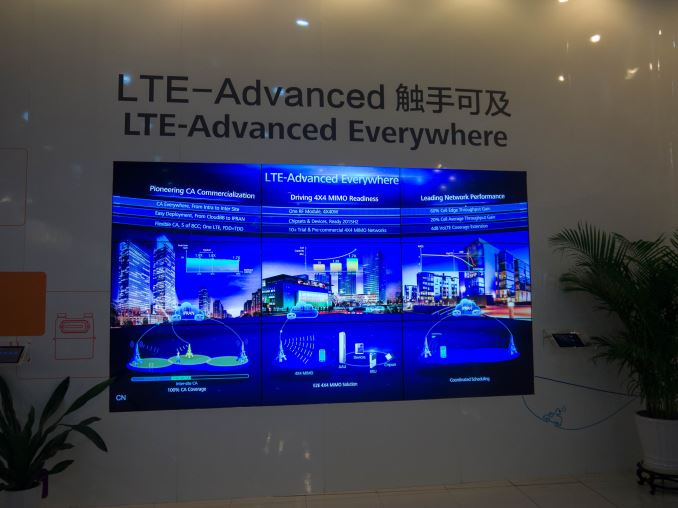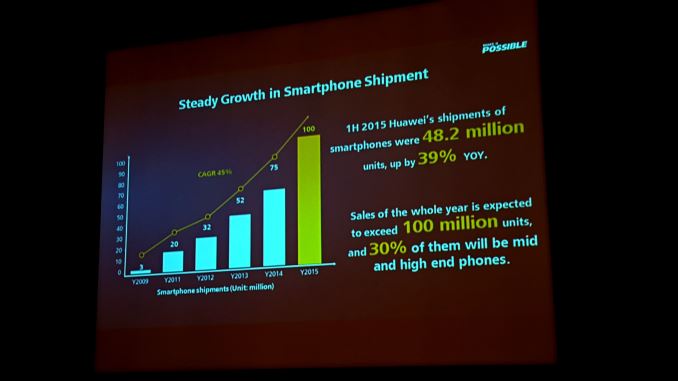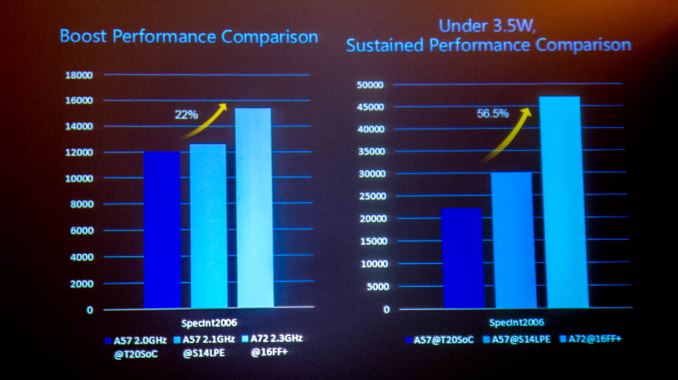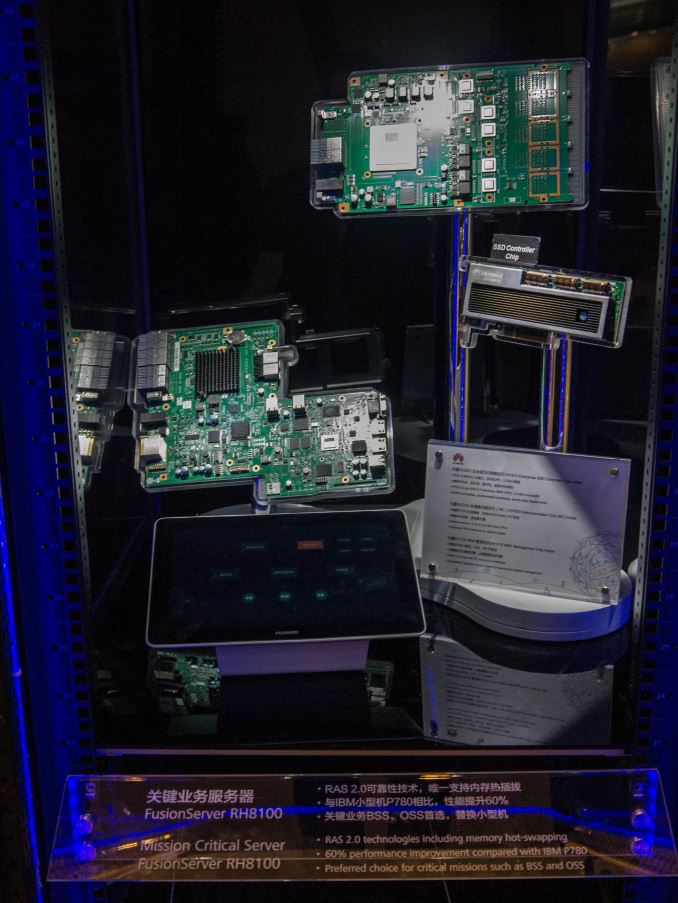China Calling: Huawei’s Media Tour, Kirin 950 and Why We Went
by Ian Cutress on December 4, 2015 8:00 AM ESTFinal Thoughts
All truth be told, when an electronics manufacturer opens up we stand to gain a great deal of insight into how they think and how strategies formulate. Sure, it’s a question of speaking directly to the people that actually make the decisions, otherwise questions and answers never go through the chain. But also as an editor, from my perspective, it is important to understand when you are presented with a standard PR answer and ask the right questions sufficiently in order to get to the heart of what makes a company tick. There will always be things that a company will never tell you, either due to liability or the level of trust they have with you, or there might be some discussions that remain strictly behind closed doors.
As we tell every company we meet, those closed room discussions, despite not directly producing content for us as technical media or analysts, are just as valuable as on-record meetings and can actually be really helpful in understanding perspective or technical details. Even if we do not write about what is said, it enables another layer of conscious or sub-conscious consideration and analysis about the industry for when we write about other topics, helping us translate what we see into the wider picture. Understanding why from a bottom-up perspective is just as important as the top-down, even more-so when looking at trends and directions and being able to educate users and engineers alike.
In that regard, this trip has established a new level of dialogue between Huawei and AnandTech in order for both sides to understand each other more, from our understanding of the markets and devices to their diverse silicon and product portfolio. That rapport and direct line of communication to those who turn the cogs which we did not have before is important, with respect to handsets, silicon, and wider corporate strategy. It is clear that Huawei wants to expand into more markets beyond their standard Chinese base, and has dipped its toe into leading the market with TSMC’s 16nm FinFET+ node in the Kirin 950. The phrase ‘premium brand’ was a common theme throughout our trip, and the numbers back that up. Moving from 3 million handsets in 2009 to 48.6 million in the first six months of 2015 alone means that the investors are all happy, especially given that 30% of those are high-to-mid level devices at a cost of €400 and up. Being partially vertically integrated through its HiSilicon subsidiary allows it to reduce cost, spend on R&D and provide a custom product as long as it is well executed. While this is going on, Huawei’s two other business groups on services and infrastructure account for the other 60% of the company, which are also both benefiting from the HiSilicon synergy.
Huawei does still have several mountains to climb however, this much is obvious. When speaking purely about the handset business, when striving for that premium brand status, its presence in North America is still a way behind the two major players. This stems from several factors including a CDMA licensing and certification issue preventing Kirin chipsets in North American models, but also an issue regarding the perception of some users that will not want to hand over money for a device made by a Chinese-based data company, especially if they cannot pronounce the name. Arguably the first of those issues is easier to crack about CDMA, such that one solution to Kirin might be to produce a die without an integrated modem, similar to Apple, but both of the issues above will have severe implications on Huawei’s ability to expand in the US. The Huawei watch too, as a dip into the wearable space, comes with many variables on style, size, applicability, usefulness, ecosystem, and others – sometimes a single model can be deceptive when users have more unique tastes and perhaps want something more/less than a classic watch design.
For the rest of the world where CDMA isn’t a factor, the latest Kirin 950 chipset needs to be a proven entity and tackle the big players in Apple’s A9, Qualcomm’s upcoming Snapdragon 820, Samsung’s Exynos 8890 as well as other upcoming custom designs. Samsung is the only member in that list with their own fabs, meaning the others will have to pay top dollar for a lead in semiconductor manufacturing. Beyond that the quality of the designs for performance, power efficiency, custom IP blocks and software integration will also be up against back-end production of the silicon itself. It comes across as a fairly daunting task for one of these manufacturers to get all the pieces in place for a new flagship handset every year that builds on the last. In order to be successful they have to execute well in every area every year, to which we’ve already seen some failures and successes.
Both Andrei and I were quietly surprised with the Kirin 950 announcement, and felt positive for the 950 as it offers some interesting innovations (first smartphone A72 cores, first hybrid memory controller, new custom image signal processor, low power i5 sensor hub with compute capabilities in an ARM Cortex M7). It will be interesting to see how much we can decipher about the new chip compared to the old, especially when we have new cores (A53/A57 to A72), a new process node (28nm to 16FF+) , new custom IP and so on. When we get a device into test, teardown and produce numbers, they will tell the story. But as is obvious from our trip that smartphones are just the tip of the iceberg for Huawei.














109 Comments
View All Comments
s.yu - Saturday, December 5, 2015 - link
No, just no. Hua is exactly the same in Beijing dialect as it would be in standard Mandarin. Stop pretending to know things that you don't.s.yu - Saturday, December 5, 2015 - link
It does not. Hua in Beijing dialect is exactly as it is in standard Mandarin. Stop pretending to know things that you don't.s.yu - Saturday, December 5, 2015 - link
It does not. Hua in Beijing dialect is exactly as it is in standard Mandarin. Stop pretending to know things that you don't.s.yu - Saturday, December 5, 2015 - link
It does not. Hua in Beijing dialect is exactly as it is in standard Mandarin. Stop pretending to know things that you don't.Why do I have to post this over and over again, there's nothing special about this post and shouldn't be censored, except maybe by Chinese standards.
Murloc - Saturday, December 5, 2015 - link
Hue-Away sounds like a brazilian repellant.Goyim - Monday, December 7, 2015 - link
https://www.youtube.com/watch?v=KGAqvpYLiGwShadowmaster625 - Friday, December 4, 2015 - link
I dont get these guys. I almost bought a Mate 2 for its battery life. Why didnt they keep pushing it in that direction? Their newer devices seem like a constant regression.name99 - Friday, December 4, 2015 - link
Presumably because they want to sell to a larger population than JUST Shadowmaster625, and most people have made it clear that they prefer smaller(or at least thinner) phones over larger batteries...Is this so hard to understand?
When I read these tech comments, I sometimes think I'm living in a world of three-year-olds, people with no theory of mind and absolutely no awareness that other people (MOST other people) have different preferences and desires from them.
s.yu - Saturday, December 5, 2015 - link
I actually believe most people only need what Huawei provides: cheap crap in a flashy shell with a lot of battery. And they'll pay a lot for it. It doesn't take much to run the UI and beyond that, they only need to run a few SNS and make calls. They're not changing directions with the 950, look at it, T880MP4?? Samsung's going MP12 and I applaud their courage. Huawei meant for it to run the UI, camera(with the ISP to take off load), simple apps and sometimes a few videos, while MP4 keeps the die size down and it's all for an acceptable barebones experience with the lowest cost possible. They're never aiming for the top, in a technological sense, they're aiming solely at top profit and they make such a blatant show of it that it's repulsive.Murloc - Saturday, December 5, 2015 - link
how is it repulsive?If you have 1000$ and you can make more money with it, don't you want to get the most out of it?
How can you expect anybody to give up on profits to pursue some quest to make the best phone ever that is all in your head and nobody actually wants?
Most people don't need anything else than messaging apps and decent battery life, get over it.